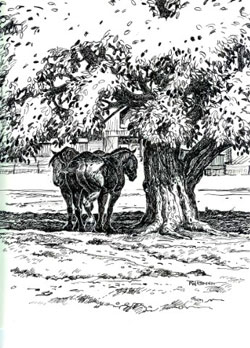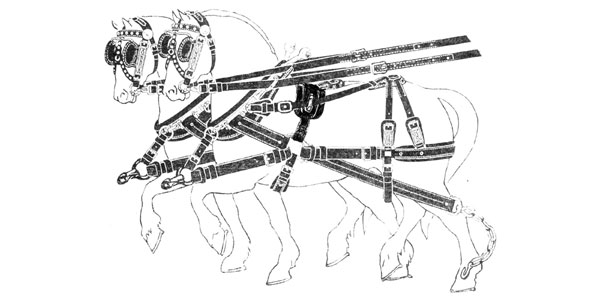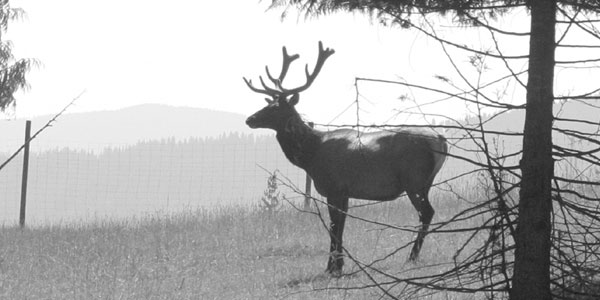
Horse Breeding
This is an excerpt from Horse Breeding by M.W. Harper, a Dept. of Agriculture Bulletin from January 1928.
In breeding horses the perfection of the animals selected should be carefully considered. Occasionally stallions are selected on the basis of their pedigree. Such practice may prove disappointing, for many inferior individuals are recorded merely because such animals command a good price on the market. In choosing breeding horses each animal should be closely inspected, and only superior individuals should be placed in the stud. If the stallion has been in breeding service and has colts, they too should be inspected. His colts show his reproducing powers and furnish the true test. If they are uniformly good, he may be considered; on the other hand, if they are inferior, he should be disregarded.
Purity of ancestry is an important factor in choosing the stallion, for the capacity of a horse to produce superior offspring will depend largely on his ancestors. Often it is a question which factor should receive a larger share of attention, the individual merit or the pedigree. Formerly great length of pedigree was associated with breeding quality, but the present evidence goes to show that it is the immediate ancestors that are of most importance.
To be suitable for mating, two animals should be as nearly alike in general characters as it is possible to select; otherwise the outcome of a union cannot be foretold. Since no two animals are exactly alike, the outcome is likely to be an average between the characters of the parents and what it is desired to obtain in the offspring. When the offspring shows good qualities, the mating is considered a fortunate nick; when there is no resemblance to either parent, but to some near ancestor, the recurrence is called atavism; and if to some of the far-removed ancestors, it is called reversion. The success of a horse breeder often depends on his ability to mate animals properly. Some persons become very skilled in such matters.
No matter what type or breed is selected, the brood mare should be of good size for the breed to which she belongs. Her conformation should be rather open. The head should be fine and feminine in appearance and the neck should be thin. The shoulders should slope well into the back, and the withers should be high rather than low. The back should be rather short, with a somewhat long underline. The ribs should be well sprung and rather open. The hips and short ribs should not approach each other too closely. The hind quarters should be broad and deep. The pelvic region should be broad so as to insure ease of foaling. The legs and feet of the brood mare should be especially noted. The bones of the limbs should be clean and free from coarseness, so that the legs appear wide and flat. The tendons should be prominent and free from meatiness, and the hair should be fine, silky, and glossy.
It is of great importance that the brood mare be free from all forms of unsoundness or disease that is hereditary or communicable to the off-spring. Many breeds have fallen into the error of considering any broken-down, halt, maimed, blind, or otherwise unsound mare fit for breeding purposes when no longer able to work. Blemishes that result from accident are not hereditary nor transmissible and do not render the mare unfit for breeding. The greatest possible care must be exercised, however, in deciding whether the blemish is the result of accident or is an inherent deficiency.
The brood mare should have a good disposition. Infirmities in temper seem to be readily transmitted to the offspring. Moreover, pregnant mares are often quarrelsome, and distressing accidents may occur when the mare has a naturally vicious disposition.
While absolutely perfect mares can rarely, if ever, be found, and few farm breeders can afford to reject a mare for small and unimportant defects, yet it would be a great advantage to each horse-breeder and a boon to the horse-breeding industry if all actually unsound and notably unsuitable mares were rigorously rejected when breeding stock is being selected.






